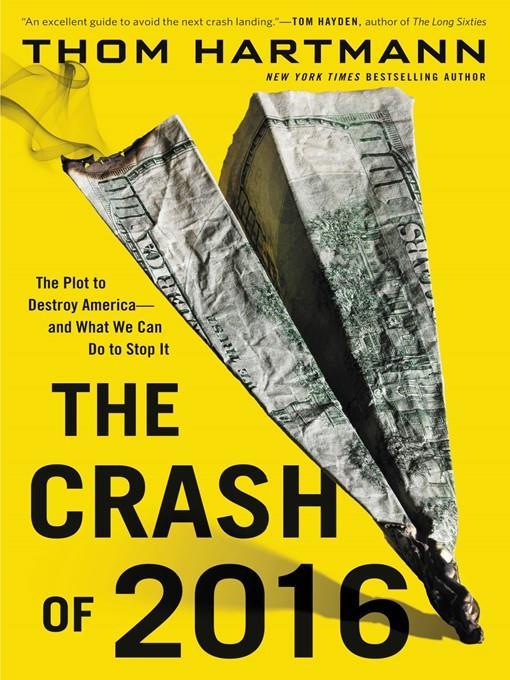
The Crash of 2016
The Plot to Destroy America—And What We Can Do to Stop It
کتاب های مرتبط
- اطلاعات
- نقد و بررسی
- دیدگاه کاربران
نقد و بررسی

September 30, 2013
The prolific author and talk-show host Hartmann (The Last Hours of Ancient Sunlight) will always be a radioman at heart, and his latest book displays the influences of his preferred medium. Here, he argues that history is essentially circular—that after a severe period of turmoil and hardship “it takes about eighty years for those who remember to thoroughly die out”—the next great tragedy coming as a result of humankind collectively forgetting the lessons that could have prevented it. The Revolutionary War, the Civil War, and the Great Depression all occurred according to schedule, and now America is due for another cataclysm, suggests Hartmann. This momentarily intriguing, but ultimately unconvincing model is buttressed by conspiracy theories accusing Goldman Sachs and other multinational financial institutions of orchestrating a global coup. Drawing readers in with purple prose and righteous indignation, Hartmann proposes populist remedies that seem unequal to the task of averting imminent catastrophe, suggesting that “all the money oil companies pay to lease and extract oil on public land could be distributed to all Americans equally,” and proposing mechanisms for strengthening worker-owned cooperatives.

October 15, 2013
Progressive talk show host Hartmann (Unequal Protection: How Corporations Became "People"--and How You Can Fight Back, 2010, etc.) argues that the financial crash of 2008 was just a precursor for the larger-scale disruptions to come in 2016. The author situates his prognosis for the years ahead within a view of the history of the republic in which democracy is pitted against what he calls, borrowing from Franklin Roosevelt, "Economic Royalists." These Royalists, typified by the billionaire Koch brothers and others, demand unrestricted expansion for free markets and minimal, or no, taxation on their financial returns. Hartmann argues that they are responsible for policies that have produced unprecedented inequality while hollowing out the core of what used to be the United States' world-leading manufacturing capability. Results have differed, but the policies have been applied repeatedly in America's history, and these economic crashes have produced a political response from the population affected. For Hartmann, two recent decisions by the Supreme Court have been critical: the Citizens United decision, which upheld the personhood of corporations, and Buckley vs. Valeo, in which corporate political advertising expenditures were equated with speech. The author compares the significance of the former to the Dred Scott decision, and he believes that these two decisions, Citizens and Buckley, have made the crash he anticipates irreversible. The author also provides an intriguing account of the Supreme Court's deliberations on the status of corporations under the Constitution to demonstrate how hard-fought this battle has been. The conceptual driver is Hartmann's controversial thesis that U.S. history is an approximate 80-year political cycle occasioned by successor generations repeatedly forgetting what their predecessors previously knew and took for granted. Ideological and agitational in tone, this will appeal most to liberals.
COPYRIGHT(2013) Kirkus Reviews, ALL RIGHTS RESERVED.

May 15, 2013
An internationally syndicated talk show host heard by over 2.75 million listeners weekly and the New York Times best-selling author of two dozen books, Hartmann decries a system that staggeringly benefits the rich and predicts that the really scary crash is coming in 2015. With a 40,000-copy first printing.
Copyright 2013 Library Journal, LLC Used with permission.

























دیدگاه کاربران